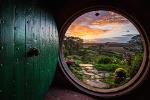Where Did Pavlovas Come From?Martin Richardson writes:Michael: here's something I posted ages ago which might be suitable for FAQ inclusion as a preventative measure against the sporadic origins-of-the-Pav "debate" which breaks out on scnz. At your discretion, of course. Cheers,Thanks Martin! Date: 22 Apr 93 22:23:04 -0400 I come not to raise the pavlova issue again but to bury it. This, I believe, should be the final word on the origins of the pav and comes from the following highly authoritative AUSTRALIAN reference: M.Symons, "One continuous picnic: a history of eating in Australia", Duck Press, Adelaide, 1982. There's a long section on the Pav, its recipe and its origins but I'll excerpt the most important bits: "A symphony of silence! So Pavlova has been described," began the report in the West Australian on Tuesday, July 9, 1929. "But who, seeing the famous ballerina for the first time as she stood on the deck... at Fremantle yesterday, could apply the description? It was Babel itself!" The reporter managed to share her cab into Perth... "They are funny, these Australians," she pronounced in the cab... The next night she gave the first of 11 evening... performances... "Exquisite Pavlova!..." began the West Australian. It was her only Perth season, on her second Australian tour. She died two years later. Yet her memory survived at her hotel, the Esplanade, because there six years later the chef whipped up the meringue and cream cake which perpetuates her name.... "In 1934, Mrs Elizabeth Paxton succeeded her husband as licensee of the Esplanade and under her invigorated guidance the afternoon teas became very desirable occasions.... One day she called in her manager... and they approached their chef [Bert Sachse] to devise something special... Bert Sachse experimented for a month.... According to Paxton family tradition, the pavlova was named at a meeting at which Sachse presented the now familiar cake. The family say that either the licensee...or the manager...(as Sachse also said) remarked, "It is as light as Pavlova". [The author then explains how he proceeded to research the NZ claim.] "To help check for me, librarians of the National Library of New Zealand kindly consulted their collection of cookery books. In fact, they found a recipe for "Pavlova cakes" ... published in 1929. The ingredients were roughly those of a pavlova, but it was not the pavlova as we know it, because the mixture was baked into three dozen little meringues. It seems a coincidence that the NZ cook was impressed by the ballerina's lightness and whiteness. "But there is more to the NZ claim than this. Even earlier, in "Terrace Tested Recipes", collected by the ladies of Terrace Congregational Church, the second edition published in Wellington in 1927, there was a recipe submitted by a Mrs. McRae for Meringue Cake. [He then describes the recipe]. From similar recipes published in 1933 and 1934, I think it is fair to say that the Meringue Cake was common in NZ in the early 1930s. Its form varied, but it was to all intents and purposes what we know as a "Pavlova", sometimes even complete with passionfruit on top. "Bert Sachse said in a magazine interview in 1973 that he sought to improve the Meringue Cake. There was a prize-winning recipe for Meringue Cake in the "Women's Mirror" on April 2, 1935. It contained vinegar, but no cornflour and was of two parts filled with whipped cream. The recipe was contributed by "Rewa", who happened to be of Rongotai, NZ. If Sachse read the "Women's Mirror" and other magazines for ideas, as his widow told me, he might have seen this recipe. We can concede that New Zealanders discovered the secret delights of the large meringue with the "marshmallow centre", the heart of the pavlova. But it seems reasonable to assume that someone in Perth attached the name of the ballerina... "In the "Good Food Guide" to British Isles restaurants in 1977, a glossary of food terms referred to the pavlova as a NZ offering, which changed the next year to Australian. Hilary Fawcett, who compiled the glossary, wrote to me about the change: "There does seem to be some controversy as to whether the wretched thing originated in NZ or Australia and I was reduced to doing a straw-vote count." "It is possible, if ungenerous, to deride the pavlova for culinary innocence. It was adopted from New Zealand. Yet Herbert Sachse made a genuine, crystallising contribution. The pavlova served its original purpose admirably. It then caught the popular imagination. Distilling the Australian concept of sweet living, it is the single great discovery thus far of our cooking." Well, that's it, and if that doesn't settle the debate this must be soc.culture.nz. Perhaps suitable FAQ material to save bandwidth? MRICHARDSON@guvax.acc.georgetown.edu
Facts, Weather, Language, Food, Music, History, Hitchhicker's Guide, Natural History |
 Doubletree By Hilton Wellington - Hotel. Doubletree By Hilton Wellington - Hotel. Situated in Wellington's CBD, Doubletree By Hilton Wellington offers guests a city escape, just 450 metres from the...  Waitomo Caves and Lord of the Rings Hobbiton Movie Set Tour including Lunch from Hamilton - Day Tour - Hinuera. Starting from $570.00 per person. Waitomo Caves and Lord of the Rings Hobbiton Movie Set Tour including Lunch from Hamilton - Day Tour - Hinuera. Starting from $570.00 per person. Your private transport takes you to two of New Zealand's most famous attractions on a full-day tour to Waitomo Caves...
|
||